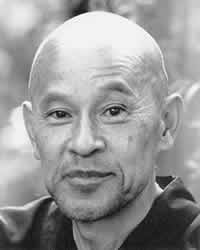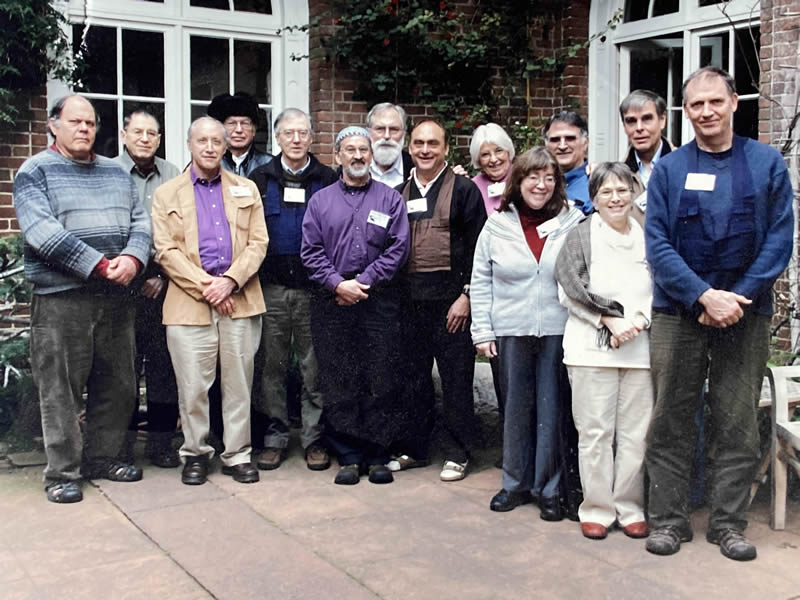cuke.com - Shunryu Suzuki Index - WHAT'S NEW - table of contents

FROM Buddhadharma FALL 2012 MAGAZINE
Forum: San Francisco Zen Center at Fifty
(Buddhadharma link no longer working)
Steve Stücky, Blanche Hartman, Norman Fischer, and Mary Morgan discuss some of the challenges and achievements of one of American Buddhism’s oldest and most important institutions. With an introduction by David Chadwick.
San Francisco Zen Center at Fifty
Introduction by David Chadwick
The teacher was ready, the students came. Without a plan, Shunryu Suzuki arrived in San Francisco May 23, 1959. The Zen garden of America had been fertilized by Nyogen Senzaki, Paul Reps, DT Suzuki, the Beats, Alan Watts, the First Zen Institute of NYC. Instant satori and the inscrutable orient were on people’s minds. Suzuki emphasized that practice is enlightenment. “I sit zazen at 5:30 in the morning. You are welcome to join me,” he’d say. He took one step after another, was always there with and for his students, aware of the fragility of the situation. Three years later, almost to the day, he was installed as abbot of the Japanese American Sokoji. In August his wife and younger son arrived and articles of incorporation were filed for "The Zen Center of San Francisco." Fifty years ago he had decided to stay.
Fueled by a growing interest in Asian ways and the hippie migration, the zazen group expanded and founded Zen Mountain Center, a pioneering Zen monastery at Tassajara Springs, an historic Monterrey County resort in Los Padres National Forest. There women and men practiced together, following Japanese forms in a new way, chanting in both languages. It also kept the gates open to the public for the summer guest season which kept the community grounded in society, brought in much needed revenue, and exposed thousands to the practice of Zen.
In 1969 Suzuki and his assistant Katagiri, in a mutual agreement with the board of the Japanese American congregation, left Sokoji and moved to the new City Center on Page Street. There residential practice expanded, and positions and options increased. There were priest and lay ordinations, but “We’re neither priest nor lay,” Suzuki said. He expressed concern about the growing size of Zen Center; some elders lamented a loss of intimacy.
After Suzuki’s death from cancer in December of ‘71, his sole American heir Richard Baker became abbot. Green Gulch Farm was acquired, adding a third site to the San Francisco Zen Center, the official name adopted in ’95. Businesses including a grocery store, bakery, and restaurant were also started, and operated as extensions of SFZC, providing financial support to the organization and opportunities for work practice. Outreach to the neighborhood and society increased as did the emphasis on scholarship.
Baker’s well-publicized departure in ’83 was like an unsettling divorce in the community and was followed by reflection, downsizing, and a decentralizing of teaching and administrative authority. There was a shift from a single lineage holder in the position of leadership to multiple abbots with term limits, and a new emphasis on training more teachers, some of whom went out to start other centers.
Suzuki’s and his students’ spirit of acceptance and tolerance has always been a key part of the story of the San Francisco Zen Center. The hippies came and he said, “I am very grateful to them.” That spirit continues today. Women have played a central role from the beginning. Gays and lesbians have found acceptance of their sexual preferences. The percentage of young people at the centers continues to be greater than at most small zazen groups. Members have always been largely white college educated from the middle and upper middle class who welcome diversity. Students and teachers have been active as therapists, in social work, environmentalism, peace work, harm reduction, hospice, meals for the homeless, and other forms of service and right livelihood. The SFZC has been a hub of culture and art and created friendly spaces where people and outside organizations can meet.
One of the strengths of the SFZC is that it didn’t keep expanding but became the source of a wide ranging community of independent centers, groups, teachers, and individual practitioners in America and Europe, some close to the mother ship and some not. Add those who share this lineage through the printed word and other media and the ripples of what began fifty years ago extend far, even washing back up on Asian shores.

50th Zen Center Anniversary in 2012. Left to right: David Chadwick, Loring Palmer, John Steiner, Jack Tjeerdsma, Chris Miller, Yehudah (Alan) Winter, Dwite Brown, Edward Brown, Frances Thompson, Harriet Hiestand, Jack Elias, Liz Wolf, Bill Shurtleff, and Rick Morton.